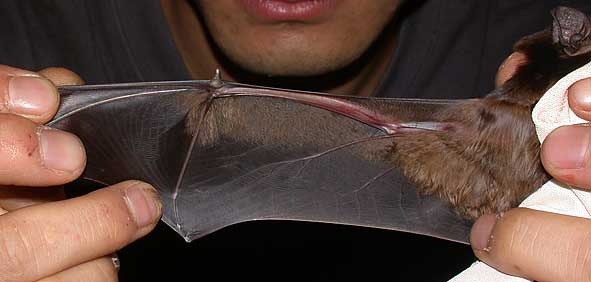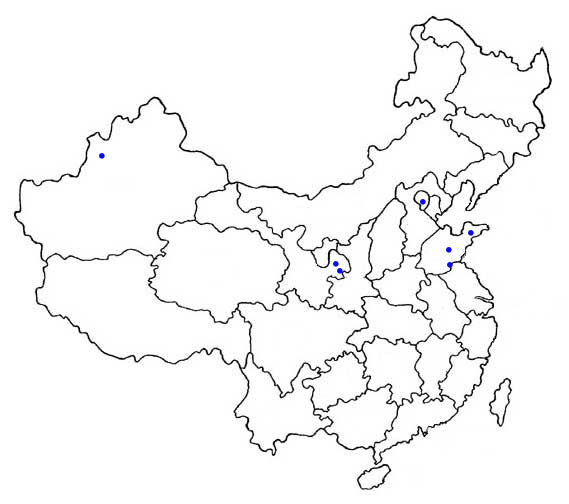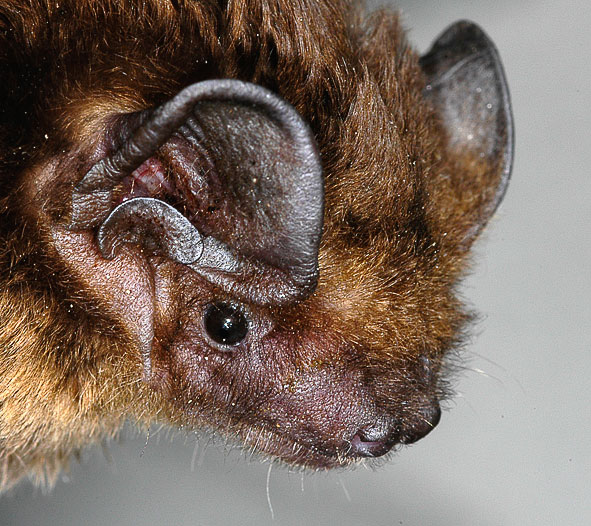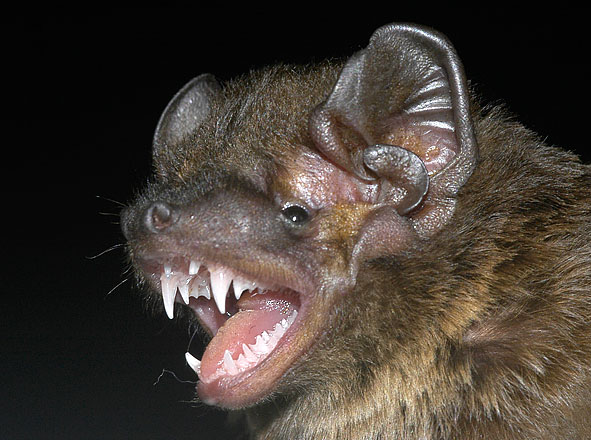Nyctalus plancyi
Chinese noctule
Morphological description Life history Distribution Habitat Roost sites and roosting patterns Emergence and flight pattern Foraging behaviour Echolocation calls Status and protection

Morphological Description
· Dorsal fur is golden brown. Ventral fur is similar to dorsal fur. Both sides have a gloss in reflected light.
· It is a robust and strong bat. Forearm length 48.7-52.5mm. the underwing is hairy below the forearm (bottom image above)..
· The muzzle is broad with well marked glandular swellings above the upper lip (Bates & Harrison, 1997).
· The tragus is broad and rounded, and is the characteristic 'mushroom shape' of Nyctalus species.
· Body mass 21.6-26.1g.
· The taxonomy of this species has been controversial. Previously treated as an Asian subspecies of N. noctula (e.g. Corbet 1978). However, it shows 17% sequence divergence from N. noctula at the ND1 gene of mtDNA (Salgueiro et al. 2006) and it has a chromosomal distinctiveness within the genus with a diploid number of 36 (Zhang 1990; Lin et al. 2002). The species is sometimes refereed to as N. velutinus in the literature, although N. plancyi is the older synonym.
Life history
· Little known.
Distribution
Found only in China and Taiwan. The mainland Chinese distribution is shown by dots on the map (as given by Zhang et al. (1997).

Habitat
· Can be found in towns and villages. They were collected at the altitude from 577 metres to 2000 metres (Bates & Harrison, 1997).
Roost sites and roosting behaviour
· Roosts in buildings, often under tiles. There is a large roost in an old temple at Dule, about 100 km north of Beijing (below).

· Their roost sites are variable and also include caves, buildings (roof, cellar), ruins, hollow trees, and rock crevices.
Emergence and flight pattern
· The long and narrow wings of this species confer high flight sped. often seen flying at considerable altitude.
Foraging behaviour
· Little known.
Echolocation calls
Produces low frequency narrowband echolocation calls with peak energy around 25 kHz when flying in open spaces.
Status and protection
· There is no estimation of population size in China for this species.
· Chinese noctules are not covered by the Red List of Threatened Species (IUCN, 2006) and are not listed in the Law of the People's Republic of China on the Protection of Wildlife in 1989. Given that their range appears restricted to China and Taiwan, they may be of conservation concern.
· Houses and buildings (e.g. old temples) should be protected as their habitats.

